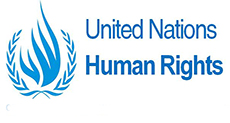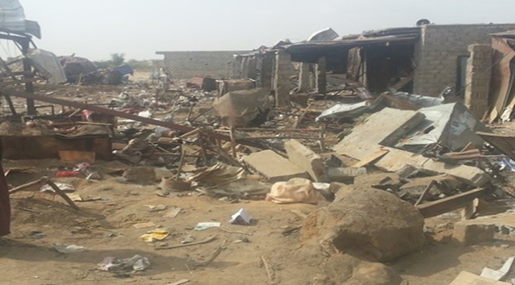
OHCHR’s Report on the Situation of Human Rights in Yemen

Local Editor
The United Nations' Office of the High Commissioner for Human Rights [OHCHR] issued its annual report regarding the humanitarian situation in Yemen.

Between 1 July 2015 and 30 June 2016, OHCHR documented 2,067 civilians martyred and 2,815 injured as a result of the conflict.
Of those, 1,259 civilians were martyred and 1,360 injured as a result of air strikes by the Saudi coalition forces, 475 civilians were martyred and 1,121 injured as a result of shelling by army units loyal to former President Saleh and 113 civilians were martyred and 154 injured as a result of attacks by armed groups affiliated with al-Qaida and Daesh [Arabic acronym for "ISIS" / "ISIL"].
This brings the total number of documented civilian casualties to 3,591 martyred and 6,360 injured since the intensification of the aggression on 26 March 2015.
Below are some of the accounts of air strikes by the Saudi-led coalition forces affecting civilians and civilian objects.
Attacks on markets:
• OHCHR had documented incidents in which air strikes by the coalition forces had an impact on localities with a high concentration of civilians, including markets and residential areas, as well as on events such as wedding ceremonies, frequently incurring high casualties and causing substantive infrastructural damage. The cases monitored by the Office indicate that air strikes were the single largest cause of casualties, resulting in approximately one third of the deaths and injuries recorded by OHCHR.
• OHCHR documented five attacks on markets during the period covered by the report, which collectively incurred the killing of 269 civilians; 124 civilians were injured. The following are the gravest and most representative attacks.
On 15 March 2016, the coalition forces launched two air strikes on Khamees market in Mastaba District, Hajjah, during peak hours. As a result, 107 civilians, including 25 children, were killed and 37 civilians, including 4 children and 1 woman, were injured. A total of 16 shops were destroyed. Several witnesses interviewed by OHCHR hours after the attack stated that, at the time of the attack, there was a military checkpoint manned by four to six officers from the police and members of the Popular Committees about 250 meters from the market. The witnesses also stated that no warning had been given to the civilians in the area prior to the attacks.
• On 27 February 2016, an air strike by the coalition forces hit the Khaleq market in Nahm District, Sana'a Governorate, killing 41 civilians, including 9 children and 4 women, and injuring 33 others, including 6 children and 3 women.
According to first-hand accounts of local residents interviewed by OHCHR, most of those killed and injured were shop owners working at the market and clients shopping at the time of the attack. OHCHR could not verify the presence of any military objects within the immediate proximity of the market.
Attacks striking weddings:
• OHCHR documented attacks by the coalition forces that struck two wedding ceremonies. According to numerous witnesses interviewed and information gathered by OHCHR, 80 civilians, including 32 women and 38 children, were martyred and 40 injured as a result of air strikes that hit a wedding ceremony in Al-Mokha District, Taizz Governorate, on 24 September 2015.
Witnesses told OHCHR that they heard the loud reverberations of military aircraft flying at low altitudes at about 9.30 a.m., followed by the first two missiles, which hit a tent that was hosting the male guests. Moments later, witnesses stated that the tent hosting the female guests, located some 50 meters away, was struck by a third missile. Remnants of the missiles partially destroyed a house located approximately 7 meters away, causing the deaths of two civilians.
Attacks on residential buildings:
• On 20 August 2015, air strikes by the coalition forces hit homes located between 5 and 120 meters from the palace of former President Saleh in Taizz, killing 53 civilians, including 28 children and 12 women, and injuring 11 others.
Local residents and eyewitnesses indicated that the palace may have been used for military purposes by the Popular Committees at the time of the attack. If that was the case, then the palace may have been a military objective. Nonetheless, OHCHR did not obtain any information regarding precautionary measures that may have been taken; in particular, according to residents who spoke to OHCHR, no warning was issued to local residents.
• On 24 January 2016, a judge and seven members of his family, including three women and three children, were martyred and five others injured when an air strike by the coalition forces hit their three-story house in the Nahdah neighborhood on the outskirts of Sana'a city and destroyed eight neighboring houses.
According to witnesses, including two bodyguards who survived the attack, an aircraft had hovered over the judge's house and, after a few minutes, two missiles had struck the house, causing the reported casualties.
Attacks on public and private infrastructure:
• OHCHR investigated numerous aerial attacks by the coalition forces against civilian objects that resulted in the killing and serious injury of large number of civilians and the partial or total destruction of public and private infrastructure.
• On 24 July 2015, a coalition air strike hit the residential compounds of the Mokha Steam Power Plant in Mokha District, Taizz, killing 73 civilians, including 13 women and 11 children, and injuring 93 others. Eyewitnesses told OHCHR that the two residential compounds were being used to house the plant workers and their family members. One of the compounds lies approximately 500 meters from the power plant while the second is about 1 kilometer away.
OHCHR was informed that the aerial attacks struck two apartment buildings situated nearby, causing substantial damage. Witnesses stressed that there were no military targets within the vicinity of the compound at the time of the attack.

Allegations of the use of cluster bombs:
• OHCHR found credible allegations concerning the use of cluster bombs by the coalition forces and. OHCHR notes that neither Yemen nor Saudi Arabia are parties to the Convention on Cluster Munitions; Yemen has ratified the Convention on the Prohibition of the Use, Stockpiling, Production and Transfer of Anti-Personnel Mines and on Their Destruction.
Although the use of cluster bombs has not been banned by those States, their use in civilian residential areas, particularly in the absence of precautionary measures, may amount to violations of international humanitarian law, in the light of the inherently indiscriminate nature of such weapons.
• In December 2015, allegations of use of cluster bombs by the coalition forces arose. OHCHR verified reports of cluster sub-munitions dropped from the air during attacks on the Hajjah districts of Bakeel al-Meer, Hairan and Haradh.
OHCHR interviewed victims and witnesses and carried out field visits to the affected areas and confirmed that six civilians had been wounded as a result of alleged cluster-bomb explosions. The use of such bombs was documented across large expanses of agricultural land in Hajjah.
OHCHR looked into allegations of the use of cluster ammunitions by the coalition forces that reportedly struck Al-Haima Port and Al-Haima Village in Al-Khokha District, Hodeidah Governorate, on 12 December 2015. According to information gathered by the Office from witnesses, 11 civilians had been wounded when cluster ammunitions reportedly hit five civilian homes in Al-Haima village.
• On 6 January 2016, similar allegations were raised when two civilians were injured and five residential buildings and seven cars were damaged after the coalition forces allegedly airdropped cluster bombs on residential neighborhoods in Sana'a.
According to witnesses interviewed by OHCHR, the attacks were carried out by the coalition forces on Ishreen Street and Al-Ribat Street in Hayal Sayeed neighbourhood and on Al-Rakkas Street, Sita'sh Street and Al-Zira'a Street in Ma'een District.
Witnesses told OHCHR that in the early hours of 6 January they started hearing loud explosions from outside their homes. When they went out, they found what appeared to be remnants of cluster bombs. The eyewitnesses also stated that five homes and at least seven cars incurred damages as a result of being hit by fragments from the explosions.
• On 19 February 2016, the coalition forces resorted to cluster bombs during air strikes on Al-Marha Mountain and the Al-Mahjar area, south of the Amran cement factory. As a result, a construction machine belonging to the factory sustained damage.
Source: OHCHR, Edited by website team
Comments



